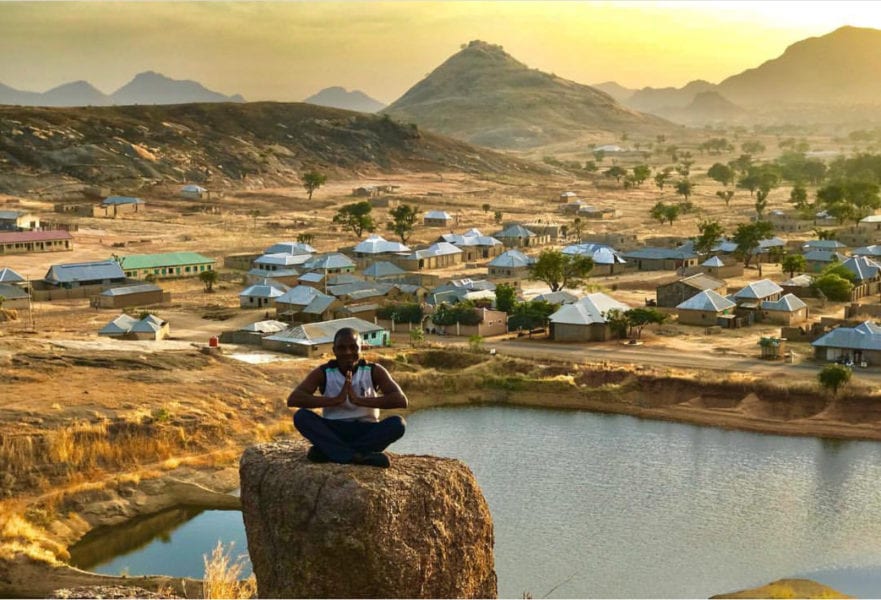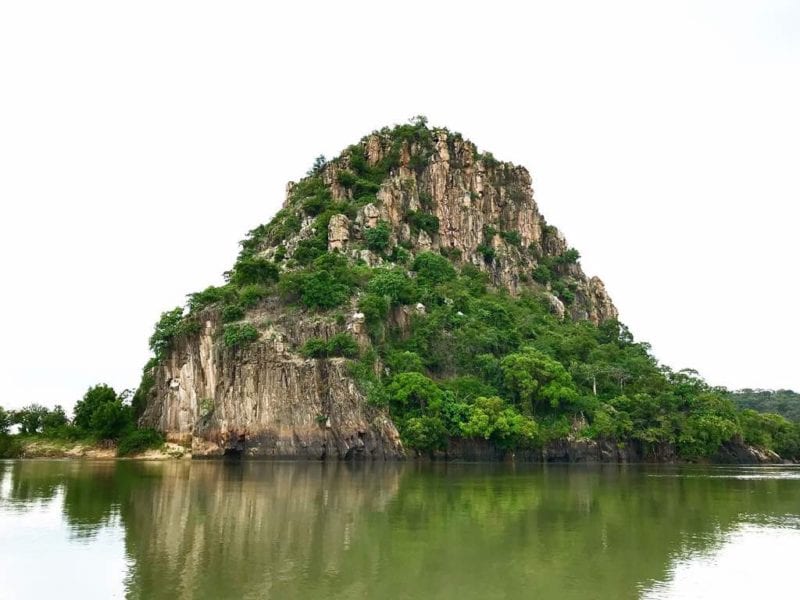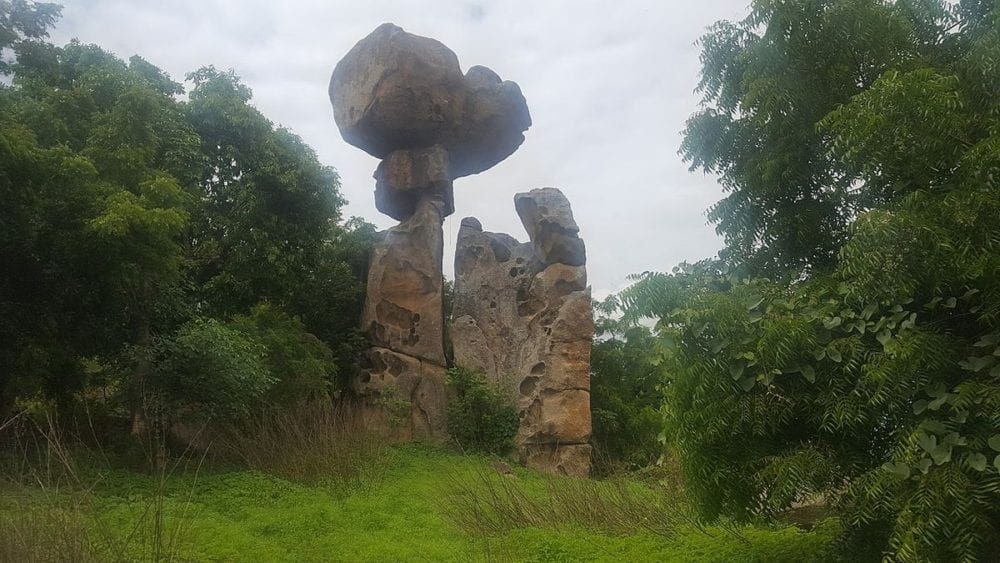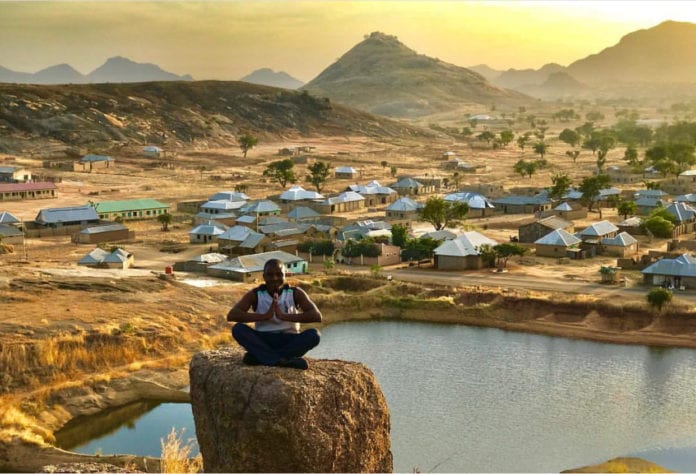You know Zuma Rock, Gurara Waterfalls, Kajuru Castle, Ikogosi Warm Springs, Olumo Rock and a host of other popular tourist attractions in Nigeria. But what if I told you there are several other not-so-popular tourist attractions in Nigeria that you’ve never heard of?
You don’t think so? Read on to discover 7 beautiful, exciting, not-so-popular tourist attractions in Nigeria:
Contents
1. Awhum Waterfall and Cave, Enugu
The next time you visit Enugu, create time to visit the Awhum Waterfall – a significant tourist attraction in the state. You will love this if you are a lover of nature. Religious tourists will also love this site.
Located in Amaugwe village in Awhum town of Udi Local Government Area, the waterfall results from a massive outcrop of granite rock and water cascading over the top, with this forming a stream. It’s located near the Awhum Monastery, a part of the waterfall, 30 meters tall, is warm through the season.
The water is believed to be curative (i.e. have healing power) and can dispel evil spirits when sprinkled.
Getting to the fall takes a 50 minutes walk from the parking spot.
Also, the community itself boasts of several pristine lakes, some of which have beautiful white-sand beaches. The multiple lakes and streams are still managed in their natural conditions. The streams and lakes host more than 50 different fish species, though fishing activities have never taken place in some of the lakes.
2. Ado Awaye Lake, Oyo State
Here comes another waterfall, another not-so-popular tourist attraction in Nigeria. Ado Awaye suspended lake is located about 20km West of Iseyin Local Government Area of Oyo State.
The suspended lake is on one of the rock crests, commonly referred to by surveyors as the “sleeping lion”. Similarly, the 350 steps that lead to the hilltop hosting the suspended/hanging lake can be climbed in about an hour. And by the way, there are many shrines and notable historical spots on the routes to the lake, further making it an exciting experience.
Visitors can climb the rocky outcrop to get a complete view of the whole range of hills lying towards the Benin Republic border. Those who have climbed to a point the inhabitants call “Esekan Iku” (the verge of death) often write their names with stone pieces on the rock.
The most interesting thing about the lake is that it never runs dry, and it has the same volume of water at all seasons.
For those who may be curious about its history, there is evidence of past civilisation in the environment as there are broken crucibles of earthen pots and other archaeological remains.
The lake demonstrates the geographical hypothesis of the “higher you go, the cooler it becomes”.
In addition, the beauty of the hill can be seen in the thick green vegetation, which stays evergreen throughout the year.
The suspended lake is a big slopping rocky plain that can be developed into a camping/picnic site. At the top of the hill, visitors can get a panoramic view of the beautiful scenery of the whole area.
The Ado Awaye suspended lake is a lovely and unique place that attracts lots of tourists from different parts of the world.
While the Ado people habit on the hill, they worshipped the mountain and revered the different unique natural formations they found there. It was said that barren women were able to conceive due to their devotion to worshipping the hill.
One of the most revered attractions on the hill is the tranquil Iyake Lake.
The forefathers of the Ado people believe that the lake has the power to provide answers to prayers. Also, it is said that the hill is home to about sixteen (16) gods.
3. Azumini Blue River, Abia State
Also known as “The Blue River, “ the Azumini River is the most transparent blue water in Nigeria, and it’s surrounded by nature and beauty, cool water and lush greens. Also, the blue river shows a more dangerous and wild side, especially where it touches the majestic rapids. The rapids are the breathtaking view that constitutes its centre of attraction, offering tourists the most incredible opportunity to explore Nigeria’s natural settings in a more urbanised way.
The Azumini Blue River is located in Abia state towards its boundary with Akwa Ibom state. The River has become a resort for Tourist because of the pleasantness it offers. Its attractive features include its crystal clear blue colour; hence it is uniquely called Azumini Blue River. It is often said, and perhaps rightly so that there is no other River in the entire country of Nigeria that is as Blue and clear as the Azumini River. The Azumini Blue River is so clear that gravels and fishes could almost be counted from the river’s bridge.
The river colour appears as sparkling blue aquamarine (like the beautiful Caribbean sea of the Bahamas). One could see to the white sandy bottom of the river several feet deep, even under moonlight. The river is most beautiful, especially when the bright sunlight glistens on it; it’s pure immaculate. One can also see the very colourful stones and its bed from the surface. The stones are so clear and clean that the Aba Glass industry uses them as raw materials for their products.
Along with the crystal blue waters comes canoe rides and comfortable sandy beaches where you can choose to lie for hours on end. There are chairs and tables for picnickers and barbecue grills ready for the preparation of tasty fish meals.
It has a simple but complex description, as its crystal-clear blue colour catches the eyes from afar. Its calm flow will most definitely attract swimmers and all those who love water just to let go and dig in; plus, if you love fishes, you can go ahead and count the fishes you see in the clear blue water wagging away.
Some other relaxation activities that can go on include canoe riding, grilling, picnicking, barbeques, and beach parties.
Also complimenting the river is another site, where one can stand and enjoy a full glare of the beauty of the Azumini River, the Azumini Hill.
The Azumini Hill provides a breathtaking view from the top to look down the beautiful low-lying valley of Azumini. The hill is the only significant hill in Ndoki since Ndoki is known as a fertile low-lying land. Story has it that the forebearers rested on the mountain, from where they saw the golden flowing river, as well as the fertile land. And since they were searching for suitable land, they needed nobody to convince them that they had come upon an exceptional one. They thus went down the hill, crossed the river by foot and settled in their numbers, as far as their eyes could see; therefore, the community by the river (as the name Azumini implies) was born.
This river has become a resort and attraction for tourists because of the beauty, pleasantness of nature that the place offers.
4. Dumi Hills, Bauchi State

Dumi is a village from the Southeast of Bauchi City in Bauchi Local Government Area of Bauchi State. It is an outskirt settlement from the city centre; Dumi is a beautiful settlement with many hills and a lake.
Due to the presence of many different hills, the adventurer or tourist decides which of the mountains to hike at a time. On the average, each mountain takes 50 minutes to walk up to the top and view the beautiful magnificent sunset (evening) and the beautiful sky. Some parts of Bauchi City can also be viewed from the top. The elevation level of the hills is not certain.
5. Juju Rock Formation, Kwara State

Jebba is a little town in Kwara State, on the border with Niger State. It was briefly the first capital of the British protectorate of Northern Nigeria.
Juju Rock, is a massive granite island-hill formation in the River Niger, off Jebba. It’s situated on the island people often refer to as the Ancient Jebba. This same rock formation has a look-alike, just not too far from the same river bank. The Locals regards this as the wife of the Juju Rock.
“Juju”, a word for Voodoo in Nigeria, gives that scary thought, but it’s actually a welcoming sight. Though the rock has been a source of fear to many explorers, among which is the famous Scottish explorer – Mungo Park, whose ship wrecked at its foot on October 7th 1857.
From the foot of the Rock, one could site numerous birds, wild monkeys and a few bush rodents.
6. Agbele Rock Formation, Oyo State

This is a naturally occurring rock formation that resembles a woman with a basket on her head and a child on her back. Legend has it that this rock formation was formed when a woman stole some yam from a rocky part of the village, which was being dried in the sunlight. And like Lot’s wife, she became a permanent fixture there.
Another story says the woman who was hungry with her child decided to steal the pieces of yam dried outside in the village’s rocky part, which unknowingly belonged to an Ifa Priest (a Traditional Priest). As she stole the pieces of the yam well kept in her calabash, she turned away to exit the scene when the Priest got to the scene and, knowing what she has done, cursed her. She immediately turned into a rock in her shape (alongside everything she was carrying, including her child).
Legend also has it that she was a goddess (a very powerful one) that suffered from Kleptomania. So, although she was rich and powerful, her only trouble was that she stole whatever her eyes saw and loved, even if she does not need it.
One day while passing by the place where the yams were being laid on the rocky floor to dry, which later would be processed into lafun, she stole the yam pieces and quickly kept them in her calabash. When she turned back to leave, she realised that one of the villagers saw her stealing. In a bid to cover her shame, she decided that it was time to stop living among humans and that she would rather turn into a stone alongside her child than face the mockery that was coming her way, so she turned herself into a rock in anger.
7. Alok Ikom Monoliths, Cross River State
The Ikom Monoliths are over 300 upright, carved stones in the Ikom local government area of Cross River State. Varying in height by one or two meters, most monoliths are grouped in circles facing each other. While the texts and images carved on the monoliths remain undeciphered, linguists and researchers believe that inscriptions may represent a prehistoric form of visual communication and writing.
Oral histories of the region claim the earliest residents made the monoliths of the area.
By the way, the monoliths are faced with some threats. An environmental study of the site has revealed some of the most immediate threats to the stones: exposure to extreme sun and heavy rainfall, theft, damage from falling trees, biological attacks caused by high humidity, and vandalism.
Also, local agricultural practices like bush burning threaten the survival of the stones.
While many local, regional, and federal governments recognise the importance of conserving the monoliths, efforts to preserve them have been thwarted by limited resources.


























